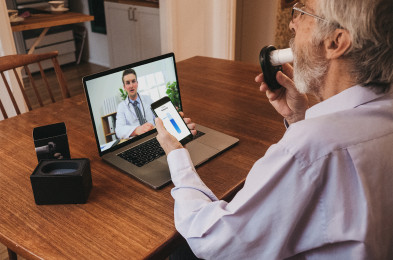Dynamic body weight support for rehabilitation and falls prevention
The Vector is a computerised robotic trolley that runs on an overhead track, to deliver dynamic body weight support (DBWS) and falls prevention. The Vector enables clinicians to challenge patients safely in meaningful ways and allows users to safely explore the limits of their balance and to improve their confidence. DBWS promotes faster recovery and increased independence while minimising risk to both patients and clinicians. With the Vector system, services can expect to experience improvements in patient outcomes, safety and clinician efficiency.
About
The Vector’s ceiling-mounted robotic trolley supports the patient’s weight and allows clinicians to safely incorporate stair climbing, obstacle course navigation, surface changes, treadmill endurance training and other challenging activities into the treatment regimen.
The versatile design also allows for full freedom of movement in all kinematic planes, enabling clinicians to integrate basic and complex ADLs into weight-bearing activities. The Vector allows clinicians to apply a wide array of strategies to improve a patient’s mobility and balance, resulting in accelerated rehabilitation and reduced length of stay. DBWS provides consistent unloading to a patient during centre-of-mass changes. With DBWS, as a patient moves upwards (i.e. stands up or steps up onto an elevated platform) the Vector system automatically shortens the supporting rope to maintain consistent amounts of unloading. Conversely, as a patient moves downwards (i.e. squats or kneels) the Vector responsively lengthens the supporting rope to maintain the set amount of unloading. This responsive, dynamic quality that provides consistent unloading allows for normal gait kinematics and expanded treatment options.
The system has been clinically tested in hospitals around the world, including select sites in the UK, and has been shown to:
- release human resources by reducing patient-handling needs
- making treatment sessions more productive
- accelerating rehab outcomes by allowing patients to do more, sooner

